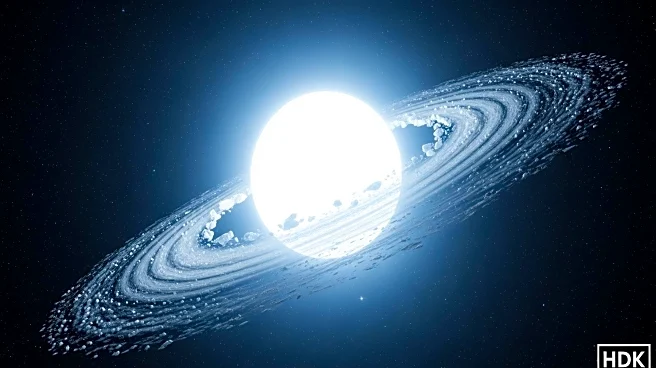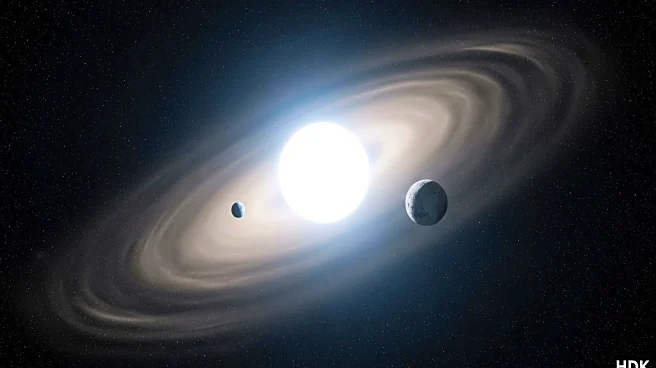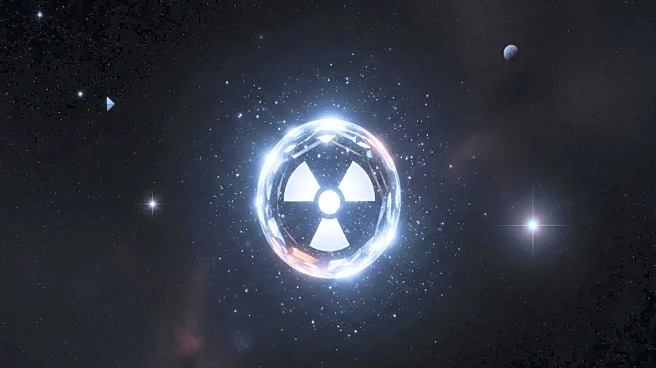What's Happening?
Astronomers from the University of Warwick have identified a white dwarf star, WD 1647+375, consuming a fragment of a Pluto-like icy object. This discovery was made using ultraviolet spectroscopy from the Hubble Space Telescope, which revealed a nitrogen-rich composition and a high ice-to-rock ratio in the debris. The object, estimated to be at least 3km across, has been feeding the star for at least 13 years at a rate of 200,000 kg per second. The findings suggest that icy, volatile-rich bodies, capable of delivering water and the ingredients for life, exist in planetary systems beyond our own. This is the first confirmed case of a hydrogen-atmosphere white dwarf absorbing an icy planetesimal, providing insights into the composition of such objects outside our Solar System.
Why It's Important?
The discovery of a white dwarf consuming a Pluto-like fragment is significant as it provides evidence of icy, volatile-rich bodies existing in planetary systems beyond our Solar System. These bodies are crucial for the development of life, as they can deliver water and essential ingredients to planets. The findings enhance our understanding of the composition of planetesimals outside our Solar System, offering a glimpse into the potential for life beyond Earth. The use of ultraviolet spectroscopy in this study highlights its importance in detecting volatile elements, which are key to identifying the building blocks of life around other stars.
What's Next?
Future research will likely focus on using ultraviolet spectroscopy to probe the composition of other volatile-rich objects beyond our Solar System. This technique will be crucial in searching for the building blocks of life around other stars. Additionally, astronomers may investigate whether the icy object being consumed by WD 1647+375 formed in the planetary system around the original star or is an interstellar comet captured from deep space. Understanding the origins of such objects could provide further insights into the formation and evolution of planetary systems.
Beyond the Headlines
The discovery raises questions about the potential for life in other planetary systems, as icy bodies like the one being consumed by WD 1647+375 are thought to be essential for delivering water and life-building ingredients. The study also underscores the importance of advanced astronomical techniques, such as ultraviolet spectroscopy, in uncovering the chemical fingerprints of distant celestial objects. This research could pave the way for future explorations into the existence of life beyond Earth, challenging our understanding of the universe and our place within it.










